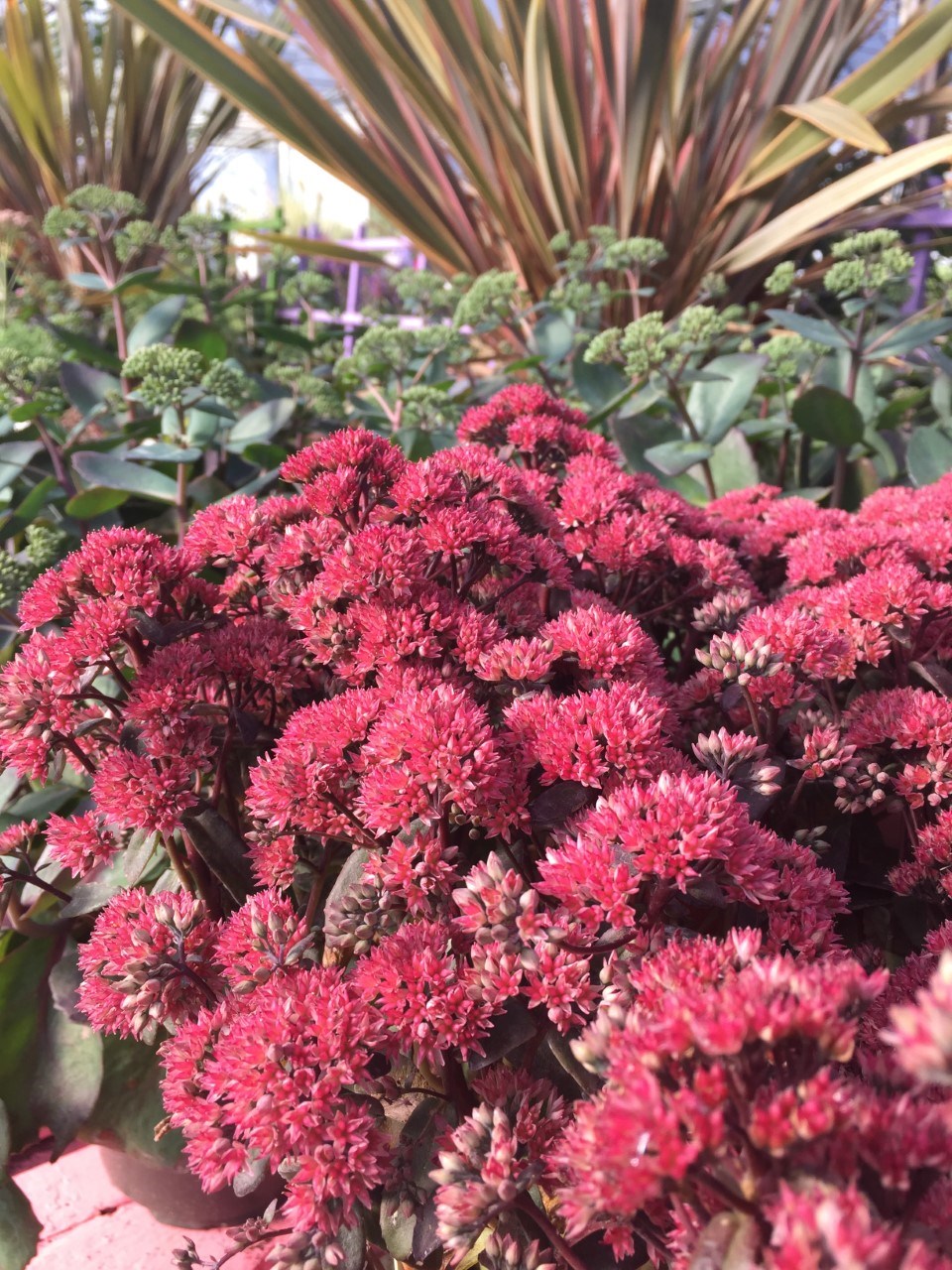The following column was submitted to the Tri-City News from Brian Minter — master gardener, best-selling author, Order of Canada recipient and co-owner of Minter Country Garden Store.
Resilient, upright sedums are some of the true late summer champions in our gardens.
There are two herbaceous species that are the most commonly planted today, and both are very hardy and heat and drought tolerant. Sedum spectabile varieties are native to Korea and Manchuria and are hardy to at least zone 5. Sedum telephium species, originally found across northern Europe to Siberia, are hardy to zone 2.
The beauty of these plants is their almost year-round contribution to our gardens or containers.
In coastal areas, their new succulent-like growth appears in January and continues to add foliage colour to the garden right through to late fall and into winter. Most varieties flower from August through September, attracting butterflies and honeybees, and they are great used indoors as colourful cut flowers.
As their broccoli-like flower heads finish, they dry nicely, creating a great fall and winter look. In fact, they can be left on the plant until their new growth appears in January and February.
Tall sedums blend beautifully with ornamental grasses, heathers, late-flowering perennials and colourful conifers to add a very sophisticated look to summer and fall gardens. The many new varieties, which have appeared over the past few years, come in a wide range of foliage colours and have some very unique flowers.
Sedum ‘Autumn Joy’, with its green leaves and pink flowers, has been the best old standby variety for many years. Sedum ‘Brilliant’ is similar but has more vibrant flower heads. Sedum ‘Neon’ is an even brighter rosy-magenta selection that simply glows in the garden.
The darker foliage varieties have really captured everyone’s imagination. Sedum telephium ‘Matrona’ from Germany, with its frosty grey foliage, tidy habit and beautiful soft pink flowers, has won numerous awards in Europe. We’ve grown it for years and love its look and performance. One of the darkest foliage varieties is S.t. ‘Purple Emperor’, with its rich, purple-black leaves that contrast nicely with its pink flowers. Its strong, stiff stems stand up well in the garden.
It’s a little hard to find, but ‘Xenox’ is another of my favourites. Its darker foliage is covered in a blue glaze, giving it a waxy grey appearance that truly stands out in a crowd. Its pink flowers further enhance this stunning plant. New white and green variegated varieties, like S. ‘Elsie’s Gold’, are some of the most vibrant you can find.
Another terrific herbaceous sedum family is the ‘Sunsparkler’ series. All the members of this family have a spreading form that acts as a groundcover. What’s truly unique about these varieties is their dramatic foliage colour. From the intense red of S. ‘Cherry Tart’ and S. ‘Dazzleberry’ to the lime green of ‘Lime Zinger’ and the bright, rich pink of S. ‘Firecracker’, they are real head-turners. They all flower beautifully as low carpets; they love the sun; and they can be planted now.
Most garden stores have a good selection of sedum varieties ready to add colour and brilliance to your late summer garden this year and for years to come. They are easy to grow, very disease resistant, pest free and make great environmentally friendly plants.
Combine them with fall grasses and late summer perennials for that ‘wow’ factor we all appreciate.




